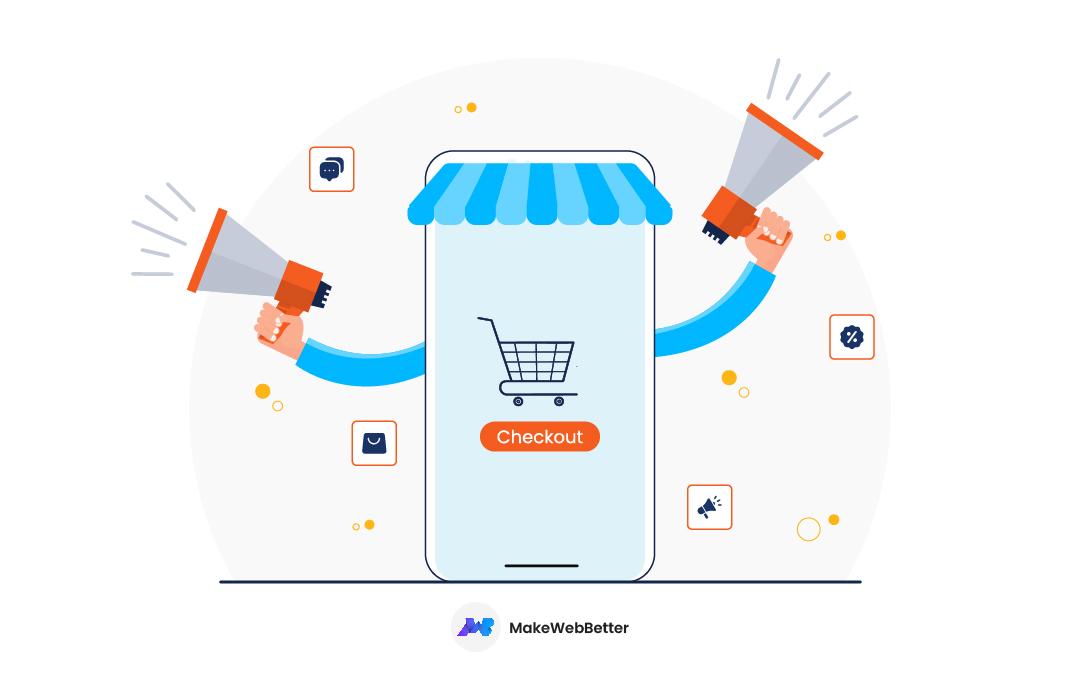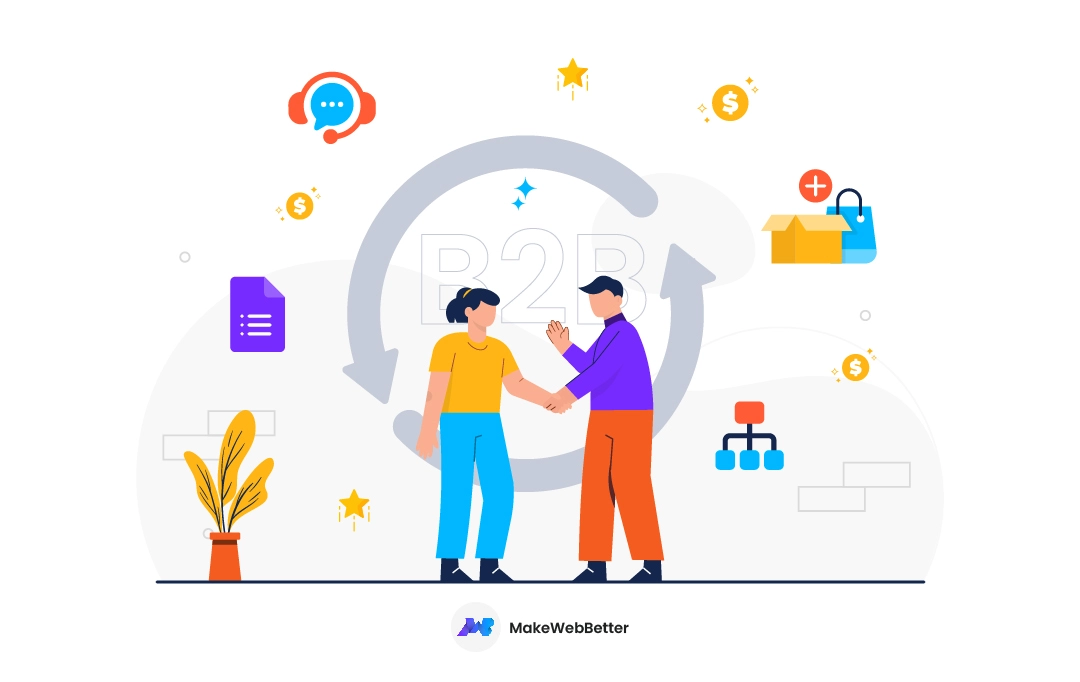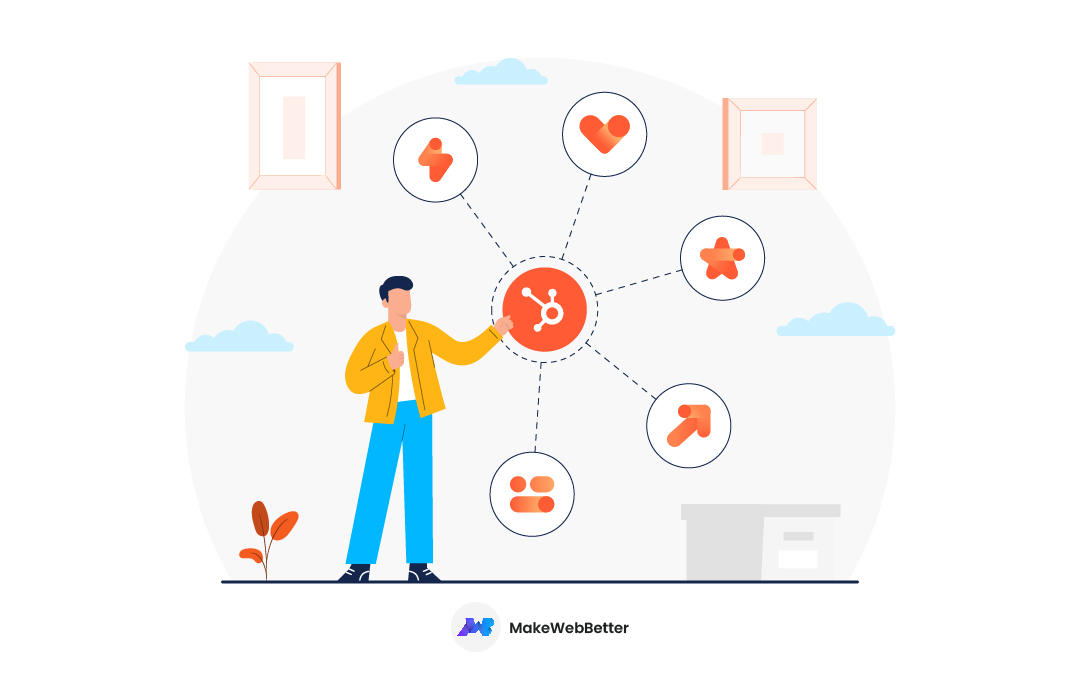Hey there! So, you’re curious about eCommerce marketing services, huh?
Well, picture this – You’re an ambitious online entrepreneur, ready to take the digital world by storm. But wait, how do you reach your target audience?
That’s where eCommerce for services swoop in like a superhero, armed with the perfect blend of strategy, creativity, and know-how. These services serve as your trusty sidekick, guiding you through the vast realm of online marketing.
From captivating social media campaigns to killer email marketing techniques, they’ve got your back. So buckle up, my friend, because with eCommerce marketing services by your side, you’re about to embark on an exhilarating journey towards online success!
Table of Contents |
Key Elements Of eCommerce Marketing Services

Let’s start with the pillars to eCommerce marketing services success!
Website Design And Development
When it comes to your online presence, a well-crafted website holds immense importance. It serves as the virtual storefront for your business, representing your brand and enticing visitors to explore further.
An aesthetically appealing and user-friendly website is like a warm welcome for potential customers, inviting them to stay and engage with your content. Embedding an Instagram feed on website can further enhance the visual appeal and user interaction.
Importance Of An Appealing And User-Friendly Website
The visual aspect of your website plays a vital role in leaving a lasting impression. Just like a beautifully designed physical store, a visually captivating website grabs attention and establishes credibility.
It showcases your professionalism and attention to detail, conveying a sense of trustworthiness to your visitors.
Guna Kakulapati, the Co-founder & CEO of CureSkin says,
Hosting an online store through an e-commerce platform gives brands worldwide reach.
With the primary aim of enhancing brand awareness, companies can measure how effectively their websites reach targeted audiences and how often those visitors make a purchase.
Optimizing Website For Conversions And Customer Experience
Equally important is the user experience your website offers. A seamless and intuitive navigation system ensures that visitors can easily find the information they seek. It’s like providing them with a clear roadmap, guiding them through your website effortlessly.
By optimizing the structure and layout, you create a user-friendly environment that encourages exploration and engagement.
However, a well-designed website goes beyond aesthetics and usability. It becomes a powerful tool for conversions and enhancing the overall customer experience.
Through strategic placement of persuasive calls-to-action and intuitive user flows, you can guide visitors towards specific actions, such as making a purchase or signing up for your services.
You create a frictionless experience that encourages visitors to take the desired steps, ultimately boosting your business’s success, simply by optimizing the conversion process.
Start Building Your Website Now
Search Engine Optimization (SEO)
SEO, or Search Engine Optimization, plays a crucial role in eCommerce for services by enhancing online visibility and driving organic traffic to your store. It consists of on-page and off-page optimization techniques.
On-Page And Off-Page Optimization Techniques
On-page optimization involves structuring your website in a way that search engines and visitors find it easy to navigate. This includes optimizing meta tags, titles, headings, and URLs with relevant keywords.
By doing so, search engines can better understand and categorize your content, improving your search result rankings.
Off-page optimization focuses on external factors that boost your website’s authority and reputation. It includes strategies like link building, social media engagement, and collaborations to generate buzz and referrals.
Building a strong online presence and acquiring backlinks from reputable sources enhances search engines’ perception of your website, leading to higher rankings.
Keyword Research And Targeting
Keyword research and targeting are fundamental aspects of SEO. By identifying the words and phrases your target audience uses to search for products or services, you can strategically incorporate those keywords into your website content.
This helps search engines connect the dots and present your store to interested shoppers, improving your visibility in search results.
Pay-Per-Click (PPC) Advertising
PPC (Pay-Per-Click) advertising is a highly valuable and results-driven tool for eCommerce for services. It allows you to display targeted ads across various platforms, reaching potential customers precisely when they are actively searching for products or services.
Popular Platforms For PPC Advertising
Firstly, let’s consider the popular platforms for PPC advertising. Google Ads, being the leader in the field, offers extensive reach as it places your ads in front of billions of daily searches. Bing Ads, although with a smaller audience, can still be a valuable platform, especially for targeting specific demographics.
Additionally, social media platforms like Facebook, Instagram, and LinkedIn provide exceptional opportunities to reach and engage with your target audience through highly targeted ads based on interests, demographics, and user behavior.
Creating Effective PPC Campaigns For eCommerce
Creating effective PPC campaigns begins with a deep understanding of your target audience. By knowing their demographics, preferences, and search behavior, you can craft compelling ad copy that resonates with their needs and desires.

Get Your CRM Up And Running!
Audit your HubSpot CRM for better online marketing.
Now, here are some things to consider to conduct effective PPC campaigns for eCommerce:
Keyword Research
Thorough keyword research is essential to identify the terms and phrases potential customers are using to find products or services similar to yours. This research allows you to strategically incorporate those keywords into your campaigns, improving their visibility and relevance.
Attractive Ad Copies
Crafting persuasive ad copy is crucial for capturing the attention and interest of your audience. It’s important to highlight the unique selling points of your eCommerce store, such as high-quality products, competitive prices, or exceptional customer service.
Compelling CTA
A compelling call-to-action prompts users to take the desired action, whether it’s making a purchase, signing up for a newsletter, or visiting your website.
Monitoring and Optimization
Continuous monitoring and optimization are key to the success of PPC campaigns. By leveraging analytics tools, you can track important metrics like click-through rates, conversion rates, and return on investment. This data-driven approach enables you to identify underperforming ads, refine your targeting, and allocate your budget more effectively.
A/B Testing
Regular A/B testing can also help you experiment with different ad variations and landing pages to maximize your campaign’s performance.
Remember, PPC advertising is an ongoing process that requires continuous monitoring and optimization. Stay up-to-date with the latest industry trends, adjust your campaigns as needed, and embrace experimentation to stay ahead in the competitive eCommerce landscape.
Start Driving Traffic With PPC
Social Media Marketing
Social media platforms have become essential tools for eCommerce marketing services, providing businesses with opportunities to engage with their target audience and promote products/services while driving traffic to their online stores. Let’s explore how businesses can effectively utilize social media for eCommerce marketing services by engaging with the target audience and implementing strategies to promote products/services.
Engaging With The Target Audience Through Social Media
Engaging with the target audience through social media is vital for building brand awareness, fostering customer loyalty, and driving conversions.
Social media platforms like Facebook, Instagram, Twitter, and LinkedIn offer unique ways to connect with your audience on a more personal level.
By actively participating in conversations, responding to comments and messages, and sharing relevant content, you can create a sense of community and build strong relationships with your customers.
Strategies For Promoting Products/Services And Driving Traffic
And now let’s explore effective strategies for utilizing social media platforms for eCommerce marketing:
- Engage with the target audience through conversations, comments, and messages, fostering relationships and building brand loyalty.
- Leverage visual platforms like Instagram and Pinterest to showcase products through captivating images and videos, utilizing their visual appeal to attract potential customers.
- Share informative and engaging content related to your industry or niche on platforms like Facebook, Twitter, and LinkedIn, positioning yourself as an authority and building trust with your audience.
- Utilize social media advertising to target specific demographics, interests, or behaviors, ensuring your promotional messages reach the most relevant audience.
- Run contests, giveaways, and exclusive promotions to incentivize customer engagement, increase brand visibility, and drive traffic to your online store.
- Measure and analyze results using social media analytics tools, tracking metrics like engagement rate, reach, click-through rates, and conversions to refine your strategies and optimize outcomes.
Email Marketing
Email campaigns are a powerful tool for eCommerce businesses to engage with customers, drive sales, and build lasting relationships. By building an email list, segmenting subscribers, and crafting compelling email content through automation, you can foster customer relationships, increase sales, and drive success for your eCommerce business.
Building An Email List And Segmenting Subscribers
Building an email list is essential for effective email marketing. By offering incentives like exclusive discounts or valuable content, you can encourage visitors to your website to subscribe to your email list.
This allows you to establish direct communication channels with potential and existing customers, ensuring you can reach them with targeted offers and updates.
Segmenting subscribers is crucial to deliver personalized and relevant content. By categorizing subscribers based on their demographics, preferences, purchase history, or engagement level, you can send tailored messages that resonate with each segment.
This increases the likelihood of engagement and conversions, as subscribers receive content that aligns with their specific interests and needs.
Crafting Compelling Email Content And Automation
Crafting compelling email content is vital to capture attention and drive action. By creating engaging subject lines, clear and concise copy, and visually appealing designs, you can encourage recipients to open your emails and take the desired action, such as making a purchase, visiting your website, or signing up for an event.
Utilizing automation tools allows you to set up triggered emails based on customer behavior, such as abandoned cart reminders or personalized product recommendations, enhancing the customer journey and boosting conversions.
Content Marketing
Content marketing plays a pivotal role in the success of eCommerce websites, enabling businesses to create valuable and relevant content that attracts, engages, and retains customers.
Creating valuable and relevant content is crucial for eCommerce websites. By understanding the needs, interests, and pain points of your target audience, you can develop content that provides solutions, educates, or entertains.
This content should align with your brand and offer unique value, establishing your expertise and building trust with your audience.
Blogging, Videos, And Other Content Formats
Video content, blogging, and other content formats are effective means of delivering valuable content to your audience. Blogging allows you to share in-depth articles, guides, and industry insights, positioning your eCommerce strategy services as a go-to resource.
Videos, such as product demonstrations, tutorials, or behind-the-scenes footage, engage and inform your audience visually.
Additionally, exploring other content formats like infographics, podcasts, or interactive quizzes can provide diverse and engaging experiences for your audience.
Using Content To Attract, Engage, And Retain Customers
Utilizing content to attract, engage, and retain customers is a key objective of content marketing for eCommerce. By optimizing your content for search engines, you can attract organic traffic and increase your website’s visibility.
Engaging content that resonates with your audience encourages social sharing and can lead to increased brand awareness.
Additionally, consistently delivering valuable content to existing customers can foster loyalty and encourage repeat purchases.
By staying attuned to your audience’s preferences and evolving trends, you can ensure your content remains compelling and effective in driving success for your eCommerce business.
The number of eCommerce businesses has skyrocketed since Covid, and they’ve become far more numerous among our own clients. too.
We focus on a myriad of metrics when building and managing their marketing campaigns, but three stand out as arguably the most important:
- sales conversion rate, the percentage of website visitors who take the desired action by purchasing your product or service, calculated by dividing the number of people who purchased by the number of visitors
- customer acquisition cost, calculated by dividing the cost of your sales and marketing by the number of new customers acquired
- cart abandonment rates, the number of shoppers who quit mid-visit without purchasing compared to the total number of visitors to your website
– Arham Khan, Pixated
eCommerce With HubSpot: Offering The Best Of Both Worlds

HubSpot marketing services are a comprehensive and powerful marketing solution that offers a range of tools and features specifically designed for eCommerce businesses.
Let’s explore an introduction to HubSpot marketing services as an eCommerce marketing service solution, along with its key features and benefits.
HubSpot marketing services provide a holistic approach to eCommerce strategy services, helping businesses attract, engage, and delight customers throughout their buying journey.
It offers a suite of integrated tools that enable businesses to manage their website, optimize content, automate marketing campaigns, and track customer interactions, all in one centralized platform.
Features And Benefits Of Using HubSpot Marketing Services For eCommerce
Some key features of HubSpot marketing services for eCommerce include:
CRM (Customer Relationship Management)
HubSpot’s CRM allows businesses to manage customer data, track interactions, and gain valuable insights into customer behavior, enabling personalized marketing and customer service.
Content Management System (CMS)
HubSpot’s CMS provides an intuitive and user-friendly platform to build and manage eCommerce websites. It offers customizable templates, SEO optimization tools, and advanced content personalization features.
Email Marketing
HubSpot’s email marketing solution enables businesses to create and automate email campaigns, segment their audience, and track engagement metrics, helping to nurture leads, increase conversions, and build customer loyalty.
Marketing Automation
HubSpot’s marketing automation capabilities allow businesses to automate repetitive marketing tasks, such as lead nurturing, personalized messaging, and abandoned cart follow-ups. As a result, this streamlines processes, saves time, and improves efficiency.
Analytics and Reporting
HubSpot marketing services offer robust analytics and reporting features, providing valuable insights into website performance, marketing campaigns, customer behavior, and ROI.
This data-driven approach helps businesses make informed decisions and optimize their marketing strategies.
The benefits of using HubSpot marketing services for eCommerce marketing management are substantial:
All-in-one Solution
HubSpot marketing services consolidate multiple marketing tools and functionalities into a single platform, simplifying operations and eliminating the need for disparate systems and integrations.
Improved Efficiency
HubSpot’s automation capabilities streamline marketing solutions, saving time and resources while ensuring consistent and targeted communication with customers.
Enhanced Personalization
HubSpot’s CRM and segmentation features enable businesses to deliver personalized experiences, tailoring marketing messages and offers to individual customer preferences and behaviors.
Data-driven Decision Making
HubSpot’s robust analytics and reporting features provide actionable insights, allowing businesses to measure campaign performance, identify trends, and make data-driven decisions to optimize marketing solutions and strategies.
Scalability and Flexibility
HubSpot marketing services can accommodate businesses of all sizes, from small startups to large enterprises, and can adapt to evolving business needs as companies grow and expand.
| Also read: 6 Powerful HubSpot eCommerce Services To Grow Your Business Better! |
Choosing The Right eCommerce Marketing Services Provider
When choosing ecommerce agency services, we look for those who can translate our brand story into tangible, performance-driven strategies.
Agencies that understand the nuances of our target market, those who can wield the sword of data to slice through the noise and turn insights into action.
– John Cammidge, PPC Consultant
When selecting the best eCommerce services agency, several factors should be taken into consideration to ensure you choose a partner that aligns with your business goals and can effectively support your online operations.
Here are key factors to consider:
Expertise, Experience, and Track Record
- Evaluate the provider’s expertise in eCommerce solutions and their specific experience in your industry or niche.
- Assess their track record by reviewing case studies, client testimonials, or references to gauge their ability to deliver results.
Understanding of Your Business Goals
- A reliable eCommerce services provider should demonstrate a clear understanding of your business goals, vision, and long-term objectives.
- They should be able to align their services and solutions with your specific needs and offer tailored strategies to achieve your goals.
Understanding of Your Target Audience
- A successful eCommerce service provider should have a deep understanding of your target audience, their preferences, and behaviors.
- They should be able to provide insights on effective marketing strategies, user experience optimization, and conversion rate optimization tailored to your target audience.
Range of Services and Solutions
- Consider the breadth and depth of services offered by the eCommerce service provider. It should align with your requirements and cover areas such as website development, design, payment gateway integration, inventory management, and marketing automation.
- Furthermore, assess if they offer scalable solutions that can grow with your business and accommodate future needs.
Technology and Integration Capabilities
- Evaluate the eCommerce platforms, technologies, and tools utilized by the provider. Ensure they align with your business requirements and support the desired functionality and scalability.
- Consider their ability to integrate with third-party systems and applications, such as ERP (Enterprise Resource Planning) systems or CRM (Customer Relationship Management) platforms.
Support and Maintenance
- Consider the level of support and maintenance provided by the eCommerce service provider. This includes ongoing technical support, security updates, performance monitoring, and regular platform maintenance.
- Additionally, ensure there are clear communication channels and response times for addressing any issues or concerns.
Pricing and Return on Investment (ROI)
- Evaluate the pricing structure and determine if it aligns with your budget and expected ROI.
- Also consider the value provided by the eCommerce service provider in terms of the quality of their services, level of support, and potential for driving revenue growth.
By carefully evaluating these factors, you can select an eCommerce service provider that not only meets your technical requirements but also understands your business goals and target audience. Doing so will help ensuring a successful partnership for your online business.
What Do We Bring To The Table?

We understand how challenging it can be to find the right e-commerce solution in today’s competitive landscape.
At MakeWebBetter, we empathize with the difficulties businesses face when it comes to selecting and implementing the perfect e-commerce platform. That is to say, we are dedicated to simplifying this process and empowering businesses to succeed.
Adding to that, our expertise in integrating HubSpot services’ robust CRM and marketing automation capabilities with various e-commerce platforms, we have helped numerous businesses achieve remarkable results.
From increased customer engagement to improved conversion rates and significant revenue growth, our solutions have transformed the way businesses operate online.
Explore our success stories to witness how MakeWebBetter has been a trusted partner in guiding businesses towards e-commerce excellence.
Exploring Strategies, Tactics, And Results Achieved
Throughout the years we’ve partnered with eCommerce businesses, leveraging our exclusive HubSpot marketing services solutions to drive growth.
From integrating HubSpot’s CRM to advanced marketing automation, our approach delivers tangible results. Combining professionalism with a personal touch, we ensure a collaborative experience on the path to business success.
Here are some of our top success stories for you:

Our eCommerce marketing services’ success stories sail through brands like Game of Trades, Nobananas, Cansulta, and many more.
So, let’s discuss some of the businesses, their issues, and how we came up with the right resolution for them. Starting with,
Game of Trades

Game of Trades is a UAE based investment research company helping investors with trade insights and analysis.
What were their challenges?
Game of Trades makes use of WordPress and WooCommerce. They also wanted to sync their subscription data over HubSpot CRM for easy tracking and management because they use a subscription model.
What solution did we provide?
HubSpot WooCommerce Integration With MakeWebBetter.
How does this integration help their business?
Game of Trades wanted to create an email marketing strategy that was based on their membership and membership stages/status. They were analyzing the growth of their campaigns by focusing on Key Performance Indicators (KPIs) such as customer retention rate, life cycle, and life cycle value.
Our HubSpot WooCommerce Integration assisted them in significantly increasing their retention and customer retention rates.
Nobananas

Nobananas is a Germany based fashion brand successfully run by Susanne Hirschberg since 2009.
What were their challenges?
Nobananas had issues with their customer service. They required a tool that would enable them to provide excellent customer service by integrating a customer contact portfolio with all synced orders from their Magento store.
What solution did we provide?
HubSpot Magento Integration With MakeWebBetter.
How does this integration help their business?
Working on multiple platforms simultaneously with automation saved a lot of time thanks to the HubSpot Magento integration. As a result, they benefited from an integrated solution, which resulted in better customer service.
Consequently, they were able to sync all data related to a customer by providing excellent customer service. What’s more, it resulted in increased sales and corporate growth in their case.
Cansulta

Cansulta is an online marketplace that aims to connect every business, regardless of size. It works with a trusted network of vetted eCommerce marketing consultants ready to provide the specialized advice and support they require whenever they need it.
What were their challenges?
Cansulta’s main challenge was building mutual relationships with their B2B prospects and clients, while also maintaining the “human touch”.
Adding to that, their minimal Sales team was overpowered by the manual, time-consuming tasks of community engagement and follow-up. Similarly, their HubSpot CRM was only being used as a simple, shared address book.
They required assistance in defining, structuring, and automating their sales processes, as well as integrating everything into the powerful HubSpot services system.
What solution did we provide?
HubSpot Integration With MakeWebBetter.
How does this integration help their business?
Working with Cansulta, we were able to achieve fruitful results for the team in a much shorter time frame. Cansulta saw a significant improvement in its lead-capturing and response time performance as a result of our HubSpot Sales Hub Setup and implementation services.
Not convinced yet?Here’s Why MakeWebBetter Is Considered Among The Best HubSpot Agencies! |
Tips And Best Practices For eCommerce Marketing Services
Let’s talk about some tips and best practices for eCommerce digital marketing services.
We will discuss topics including A/B testing and data-driven decision making, mobile optimization and responsive design, personalization and customer segmentation. Also including topics like building customer trust and loyalty, as well as monitoring and analyzing key metrics:
A/B Testing and Data-Driven Decision Making
- Conduct A/B tests on various elements of your eCommerce website, such as headlines, call-to-action buttons, or product images, to identify what resonates best with your audience.
- Furthermore, utilize data analytics to gather insights on customer behavior, engagement metrics, and conversion rates. Doing this allows you to make informed decisions and optimize your marketing strategies based on data.
Mobile Optimization and Responsive Design
- With the increasing use of mobile devices for online shopping, optimize your eCommerce website for mobile responsiveness. This will ensure a seamless user experience across different screen sizes.
- Implement responsive design principles, where the layout, content, and functionality of your website adapt to fit the user’s device, improving usability and conversion rates.
Personalization and Customer Segmentation
- Leverage customer data and segmentation techniques to deliver personalized experiences and targeted marketing campaigns.
- Tailor product recommendations, email content, and promotions based on customer preferences, purchase history, and browsing behavior. Consequently, this will enhance engagement and drive conversions.
Building Customer Trust and Loyalty
- Display trust signals on your website, such as secure payment icons, customer reviews, and trust badges, to instill confidence and credibility in your brand.
- Additionally, implement a customer loyalty program, offering incentives, exclusive offers, or rewards to encourage repeat purchases and foster long-term customer loyalty.
Monitoring and Analyzing Key Metrics
- Regularly monitor and analyze key metrics related to website traffic, conversion rates, average order value, customer acquisition cost, and customer lifetime value.
- Use analytics tools to gain insights into customer behavior, campaign performance, and the effectiveness of marketing channels. They will enable you to make data-driven decisions and optimize your marketing efforts.
To assess the effectiveness of your e-commerce marketing strategies, focus on your bottom line. An increase in sales is a clear indication of success.
Additionally, analyzing your analytics can also reveal valuable insights. If you observe a higher click-through rate on your ads or website, but sales remain slow, you may need to adjust your approach.
– Matthew Ramirez, Forbes 30 under 30 Entrepreneur
By implementing these tips and best practices, you can enhance your eCommerce marketing services with the right strategies. As a result you will drive customer engagement, improve conversions, and ultimately achieve success in the competitive online marketplace.
| Before you go, here are some eCommerce Tips And Advice For Small Businesses To Grow In 2023 |
Conclusion
In conclusion, when it comes to eCommerce marketing services, finding the right partner can make all the difference in driving your online business to new heights.
By leveraging the expertise and experience of a trusted eCommerce services provider, you can unlock a world of opportunities to attract, engage, and retain customers in the digital realm.
So, whether you’re a budding entrepreneur or an established business looking to expand your online presence, it’s crucial to consider factors like expertise, understanding of your goals, and track record when selecting a provider.
Remember, it’s not just about having a stunning website or a catchy marketing campaign – it’s about data-driven decision making, personalization, and continuous optimization.








